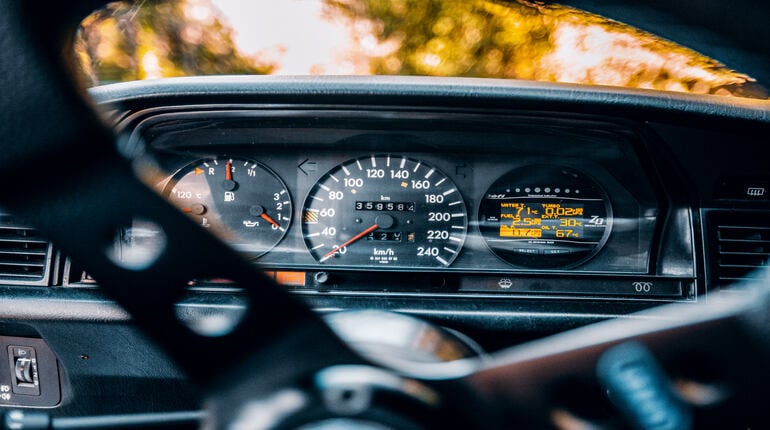Car mileage check allows you to check the mileage history for any UK vehicle, which is entirely FREE.
Mileage anomaly, DVLA mileage check, mileage discrepancy or mileage clocking is, unfortunately, a rampant phenomenon in the UK. Recent studies conducted by data check providers reveal that a staggering 2.5 million vehicles on UK roads, excluding those under three years old, have discrepancies in their mileage records.
It means the chances of buying a car with the wrong mileage are very high. If you purchase such a vehicle unknowingly and find out about inconsistency, later on, you should know you are not alone, and you have certain legal rights.
Car driving is a convenient and essential part of life for many in the UK. Whether you use your vehicle for daily commuting or occasional road trips, keeping track of your car’s mileage is crucial. However, encountering a mileage discrepancy can be a concerning issue. In this guide, we’ll explore what steps you can take if you suspect or discover a mileage discrepancy with your car.
Understanding Mileage Discrepancy
A mileage or odometer reading is essential to a car’s history and can influence its value. A mileage discrepancy occurs when there is a significant difference between the recorded mileage and the distance the vehicle has travelled. This can happen for various reasons, such as mechanical faults, tampering, or errors in recording.
Signs of Mileage Discrepancy
- Inconsistent Service Records: Check the service history of your car. Inconsistencies or gaps in service records indicate a potential issue with the recorded mileage.
- Mismatched Wear and Tear: Evaluate the overall condition of the vehicle. It could be a red flag if the wear and tear are inconsistent with the mileage.
- Suspiciously Low Mileage: If a used car has an unusually low mileage for its age, it’s worth investigating further to ensure the accuracy of the readings.
What to do if you suspect a mileage discrepancy?
- Verify the Mileage: Double-check the mileage reading by examining the odometer and comparing it with previous records. If the discrepancy is minimal, it might be due to an error in recording.
- Check for Tampering: Inspect the dashboard and the odometer for signs of tampering. Any evidence of manipulation should be reported immediately.
- Obtain a Mileage History Check: Use reputable vehicle history-checking services that provide comprehensive reports. These reports can reveal or check if a car is clocked, outstanding finance, and other crucial information.
Reporting a Mileage Discrepancy
- Contact the Seller: If you discover a mileage issue shortly after purchasing a car, contact the seller to discuss the problem. They may be unaware of the discrepancy and willing to find a resolution.
- Notify the Authorities: If you suspect fraud or tampering, report the issue to the appropriate authorities. In the UK, you can contact the Driver and Vehicle Standards Agency (DVSA) or the police to report odometer fraud.
- Legal Action: In extreme cases where the seller is uncooperative, and the issue persists, you may need to consider legal action. Consult with a legal professional to explore your options.
Preventive Measures
- Document Mileage: Record your car’s mileage at regular intervals. This documentation can serve as evidence in case of a dispute.
- Choose Reputable Sellers: Opt for reputable dealerships or private sellers with a transparent history when purchasing a used car.
- Vehicle Inspections: Before finalizing a purchase, consider getting a professional inspection. This can help identify any potential issues, including mileage discrepancies.
Checking mileage history for different age categories
Vehicles less than three years old
For vehicles in this category, mileage history can be obtained through maintenance or inspection records. Since they haven’t undergone MOT testing, no government records are available. In such cases, reaching out to previous owners or car dealers can provide valuable insights.
Vehicles more than three years old
MOT tests record the mileage at each examination for vehicles older than three years. Car Analytics provides a detailed MOT, mileage history, highlighting any inconsistencies in the readings. Our data is sourced from our trusted partners ensuring accuracy and reliability.
How should I check the mileage on a used car?
For a car not more than three years old, the only way to check its mileage history is to examine its maintenance or inspection records. Because the vehicle never went for a MOT test, it does not have any government record. However, you can contact previous owners or car dealers who bought or sold the vehicle and request them the readings. They will happily assist you in forming a connection with a potential future customer.
For vehicles more than three years old, MOT notes down the mileage on every test. With our vehicle mileage check, we provide you complete MOT mileage history and inform you if there is any inconsistency in the readings. We take data from the from the official DVLA database. Secure the confidence and peace of mind essential for your vehicle purchase!
Conclusion
Discovering a mileage discrepancy in your car can be unsettling, but taking prompt and appropriate action is crucial. By understanding the signs, verifying the mileage, and following the necessary steps, you can protect yourself and make informed decisions. If you encounter challenges, seek legal advice to uphold your rights.
Remember, staying informed and proactive is critical to addressing and preventing mileage discrepancies in your vehicle. Safe travels!
Answering your questions
How to check the mileage of a car for free?
One free source is available to check mileage history in the UK: mileage recorded by MOT testers. Whenever a vehicle undergoes an MOT test, the tester records its mileage.
Car Analytics’ free mileage check displays the Date, Mileage Recorded (MOT), and the number of Miles Covered each year. You can quickly determine any inconsistency from the mileage column in the MOT report. For instance, if a car has been recording 10,000 miles on each MOT, and suddenly the mileage drops to just 4,000 miles, you should ask the seller the reason for the dropped mileage.
Why is it essential to get a mileage anomaly check?
A mileage anomaly check, also known as a mileage verification or mileage inspection, is a process used to verify the accuracy of the recorded mileage on a vehicle. It involves checking the vehicle’s odometer reading to ensure it hasn’t been altered.
Where does the mileage check data come from?
The recorded mileage data comes from the DVSA and is registered each time a vehicle is taken for an MOT test.
We scan the mileage recorded at each test and use this data to highlight any discrepancies, such as mileage drops or odometer readings recorded in a mixture of miles and kilometers.
What happens if I purchase a clocking vehicle?
Its value will be lower than what you paid, and because the car’s components may be older than the current odometer number, it might be dangerous to drive.






